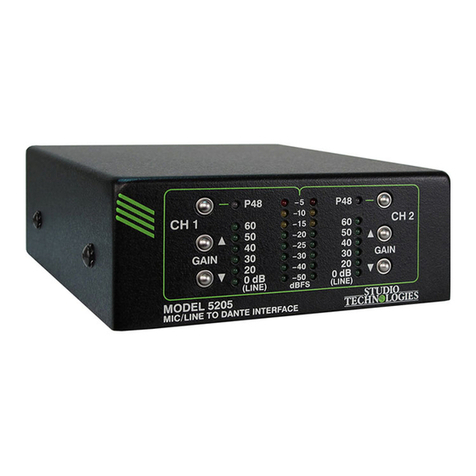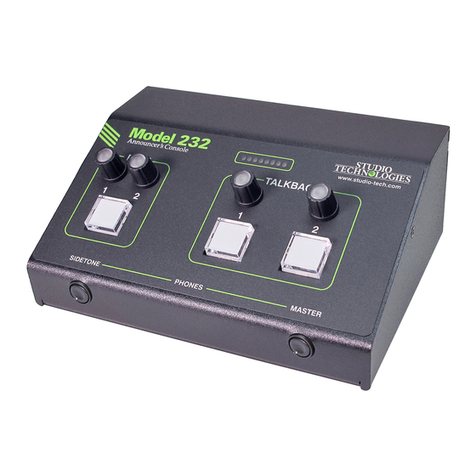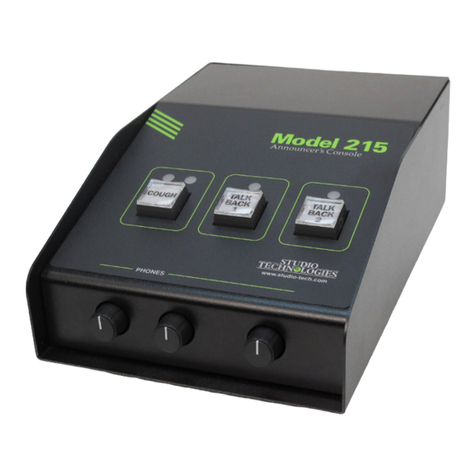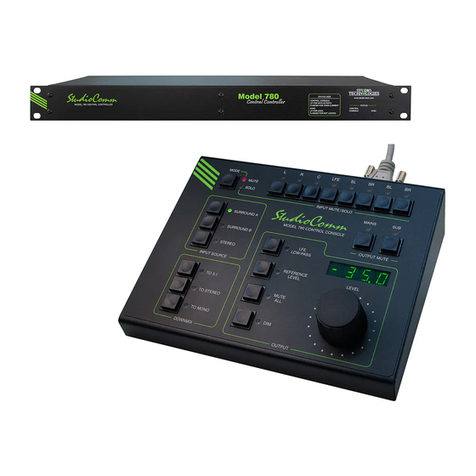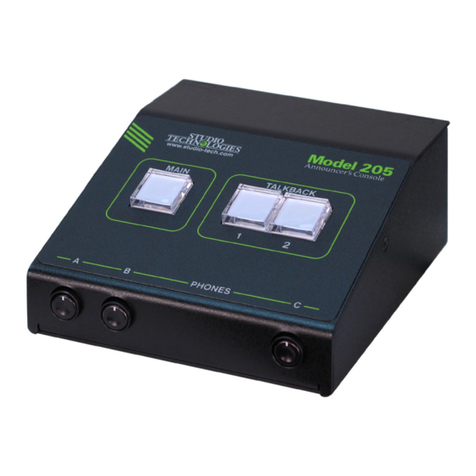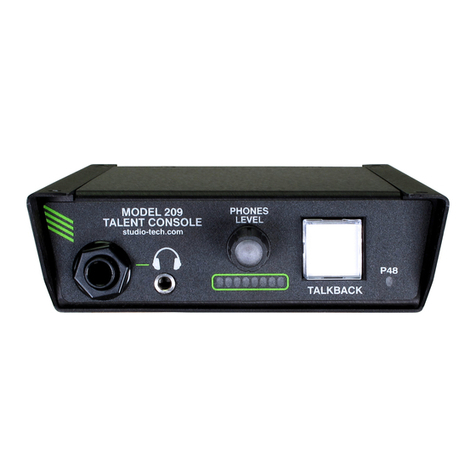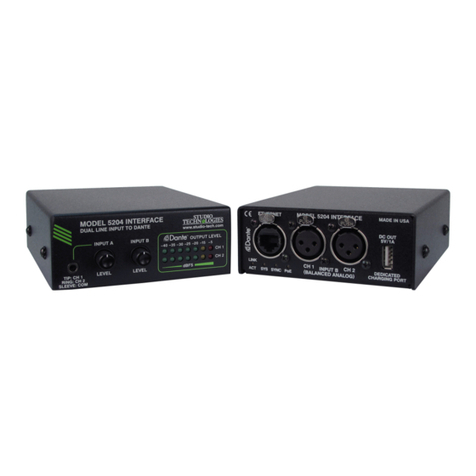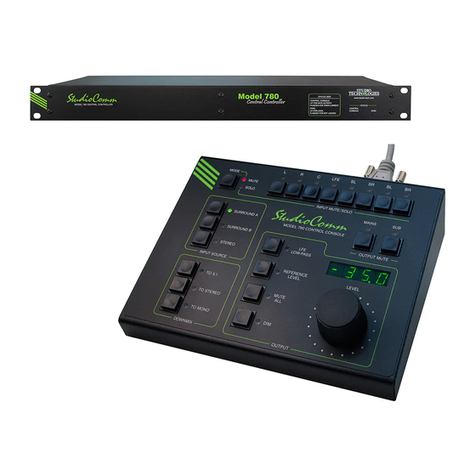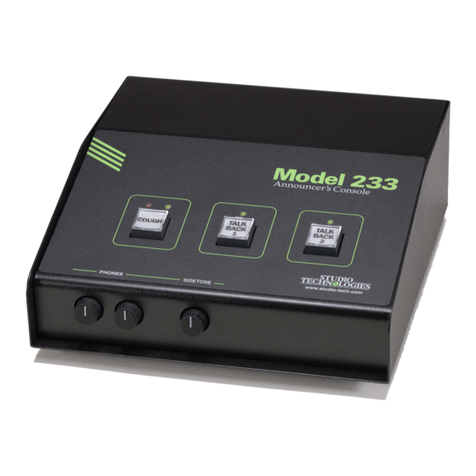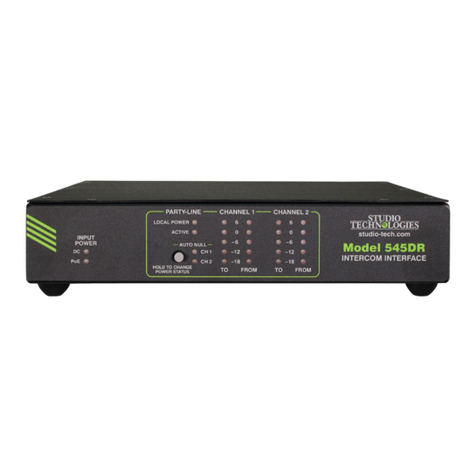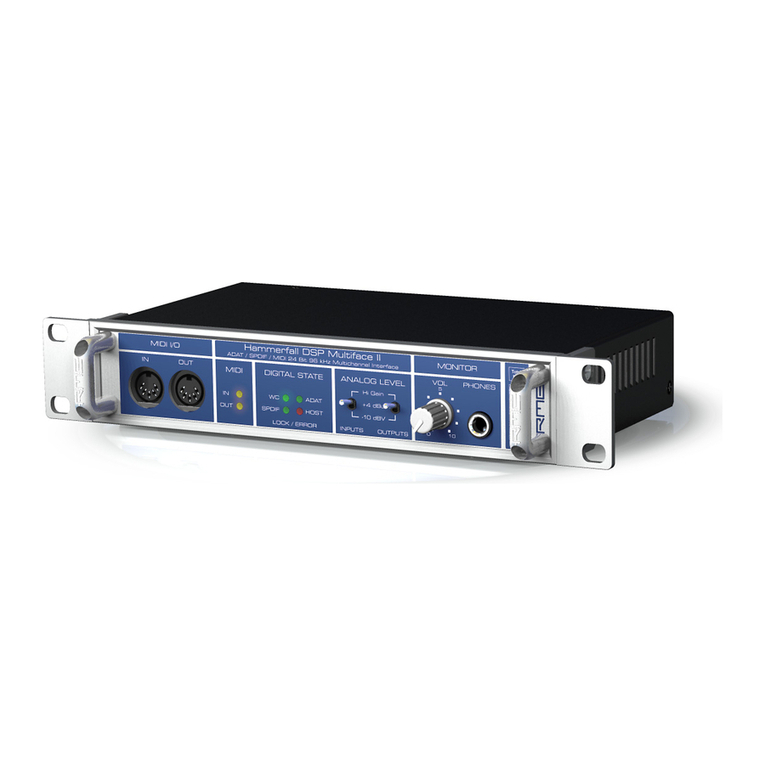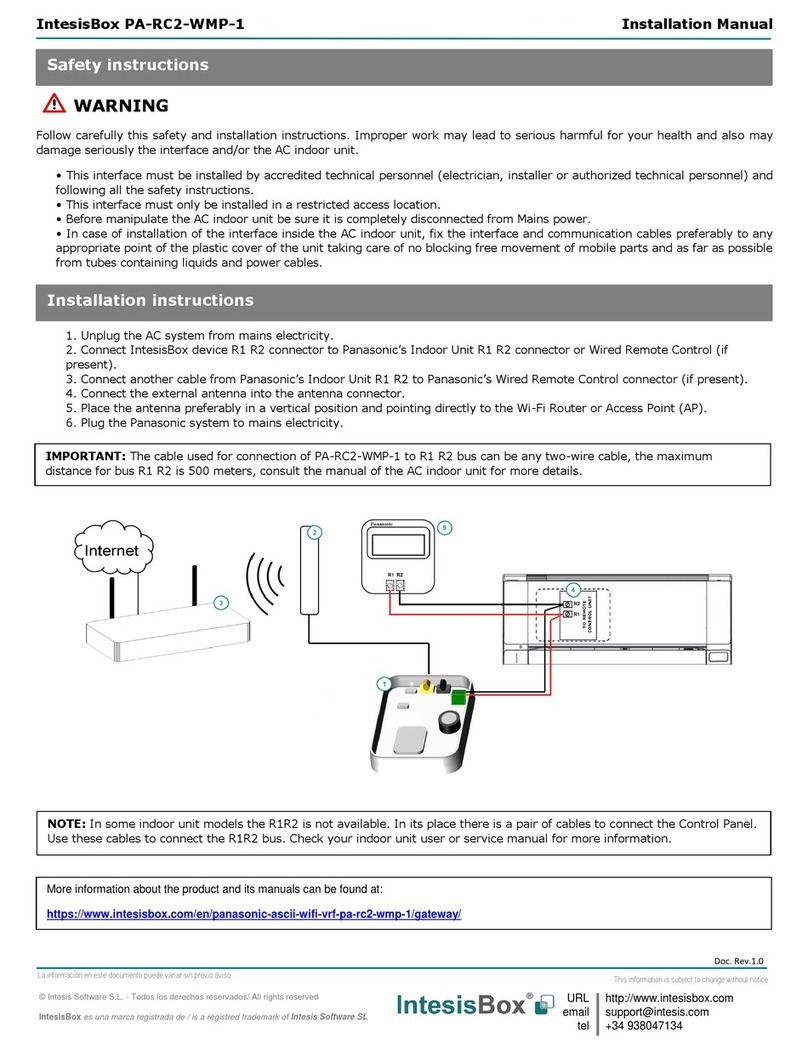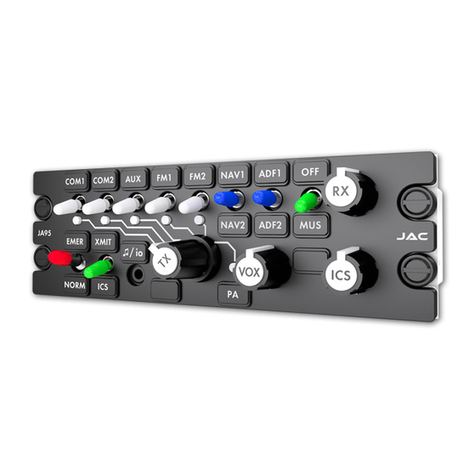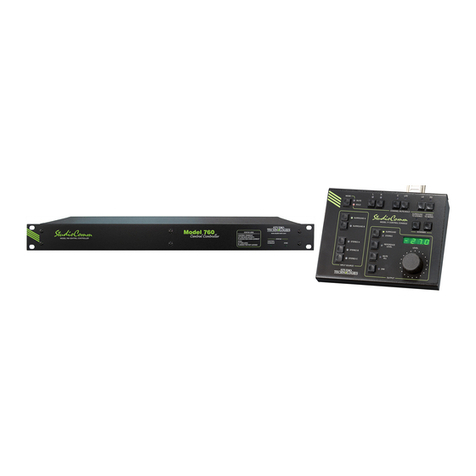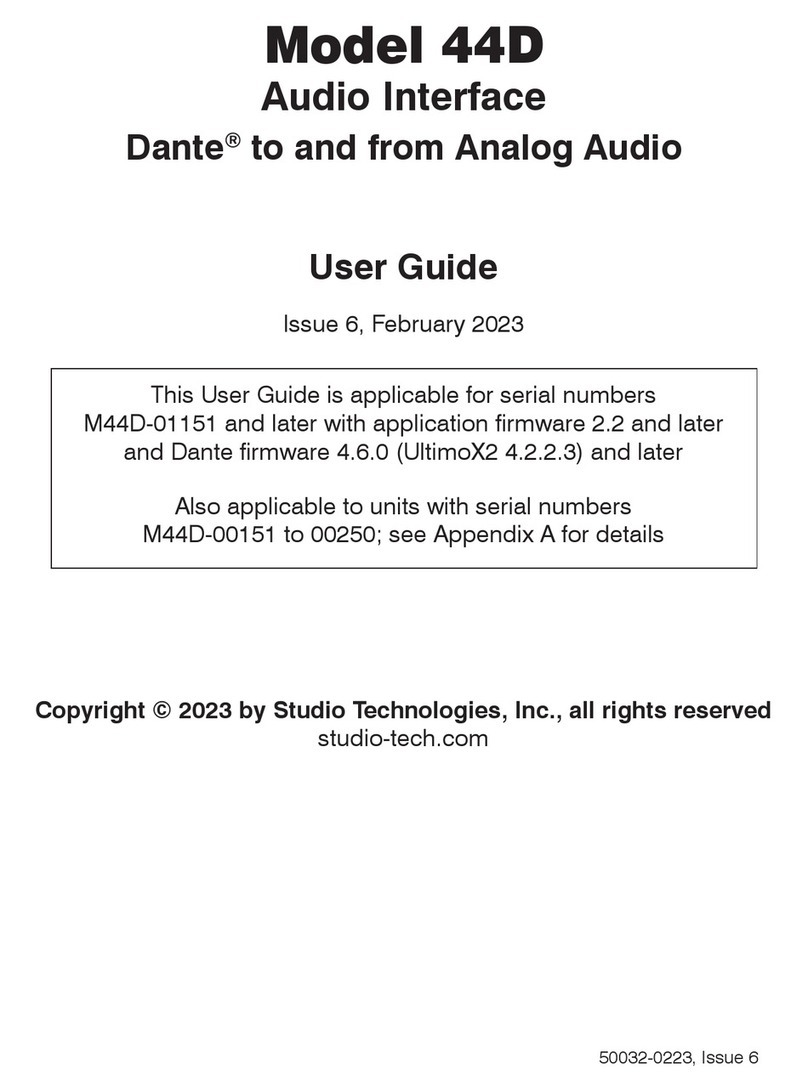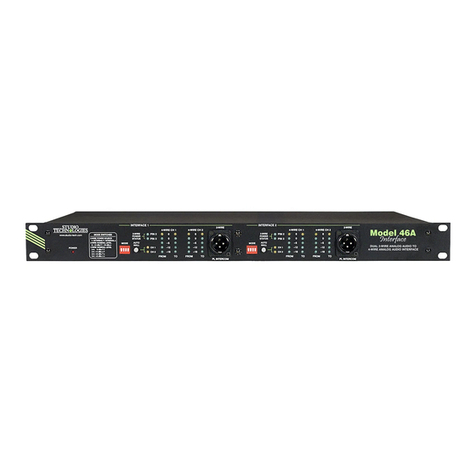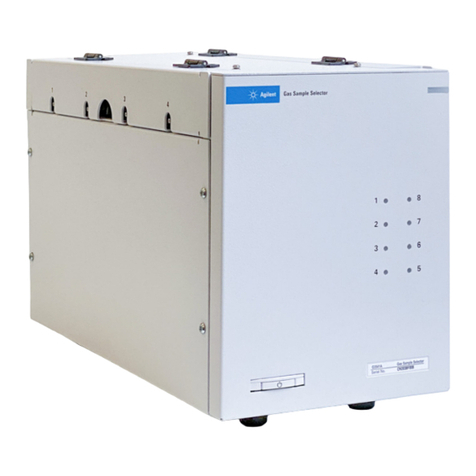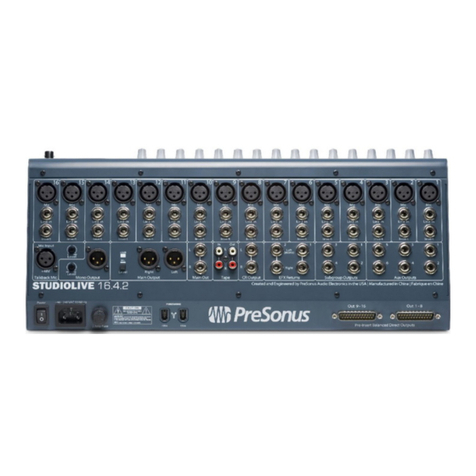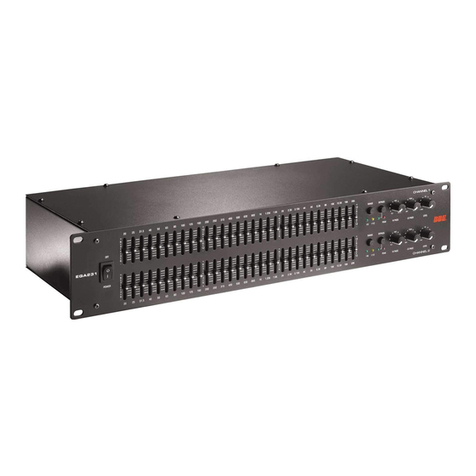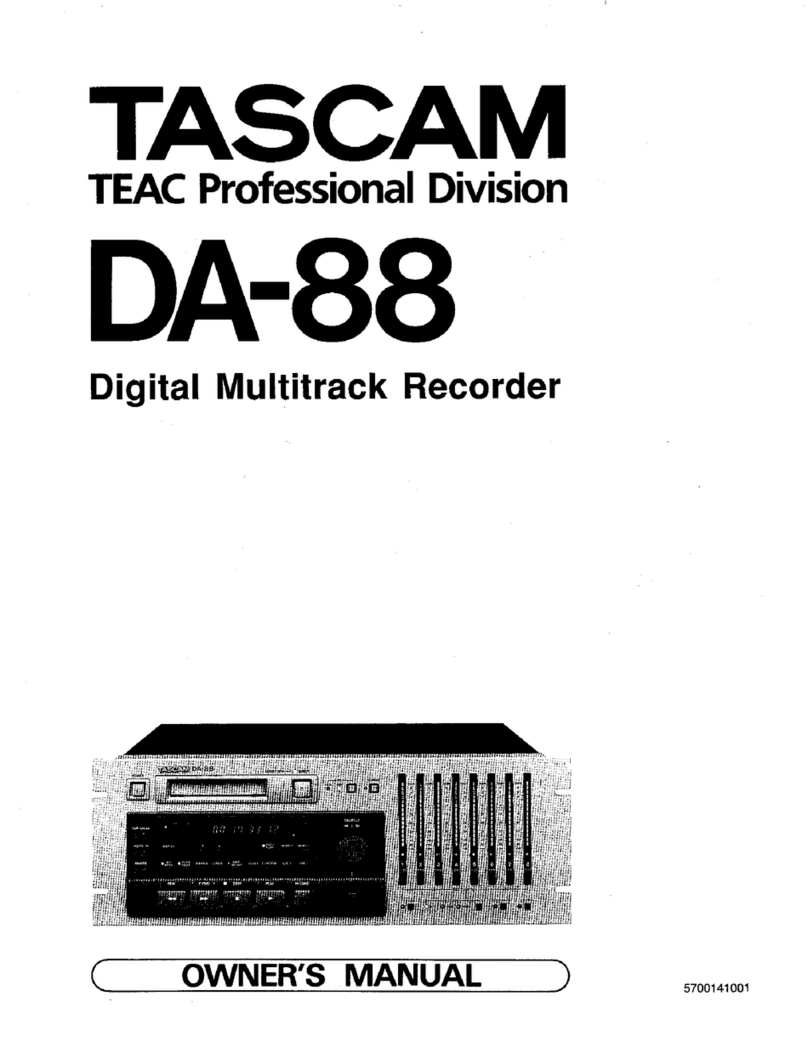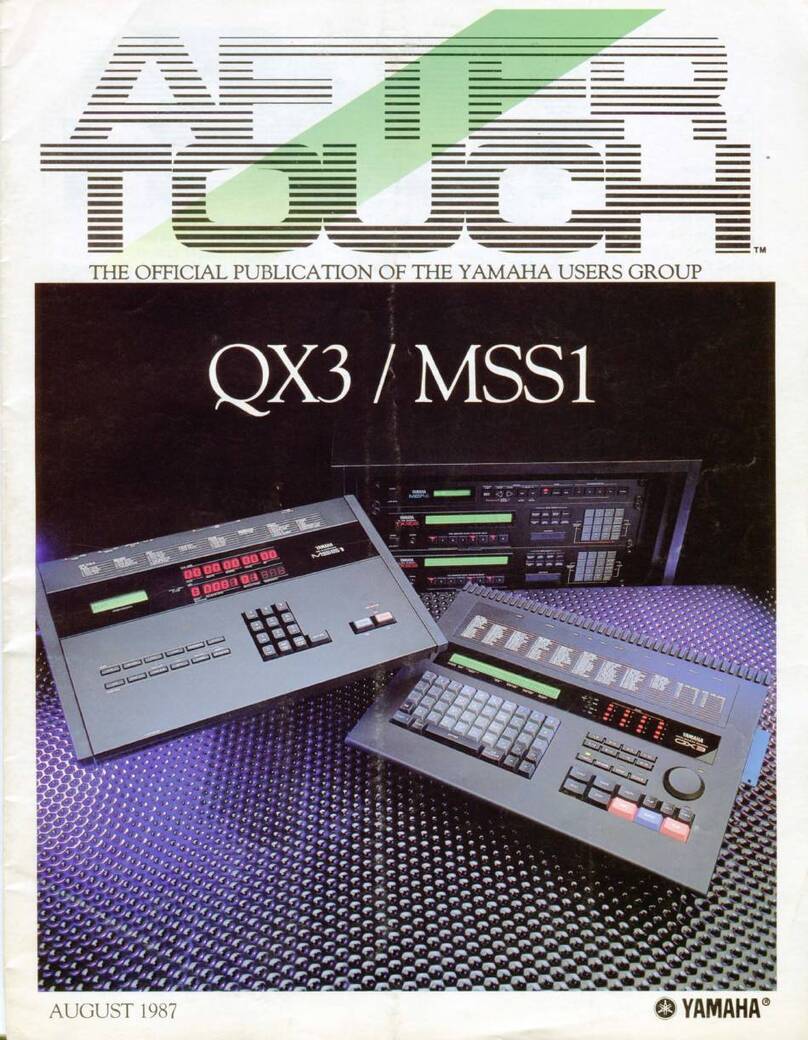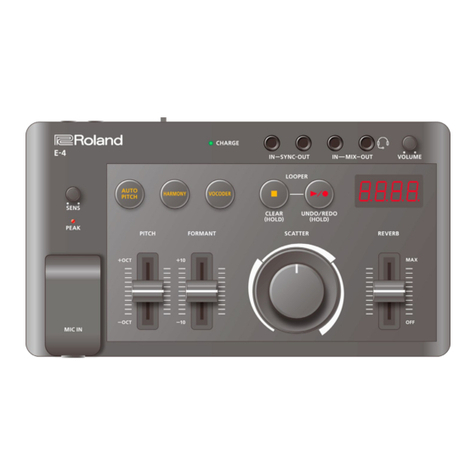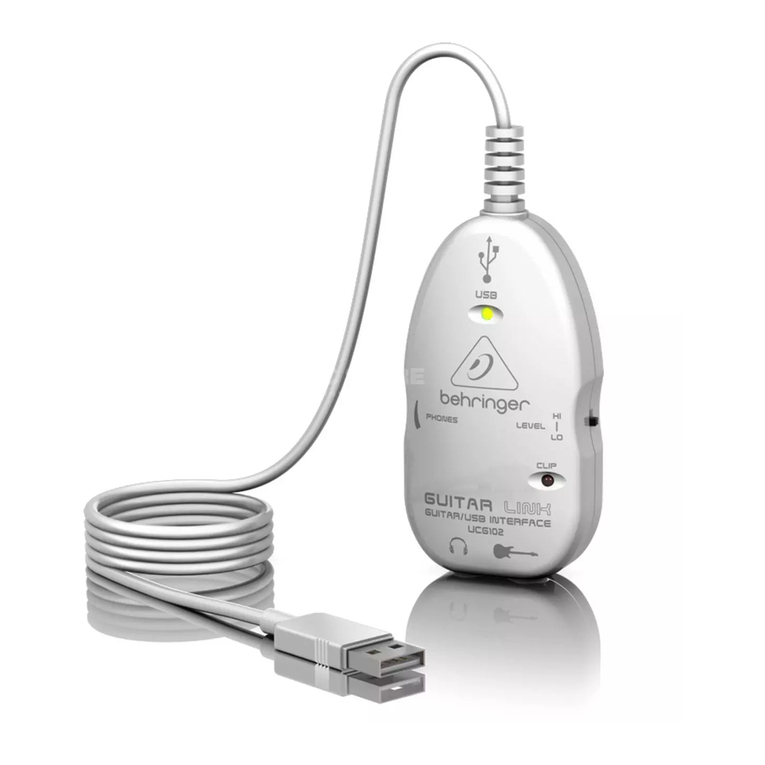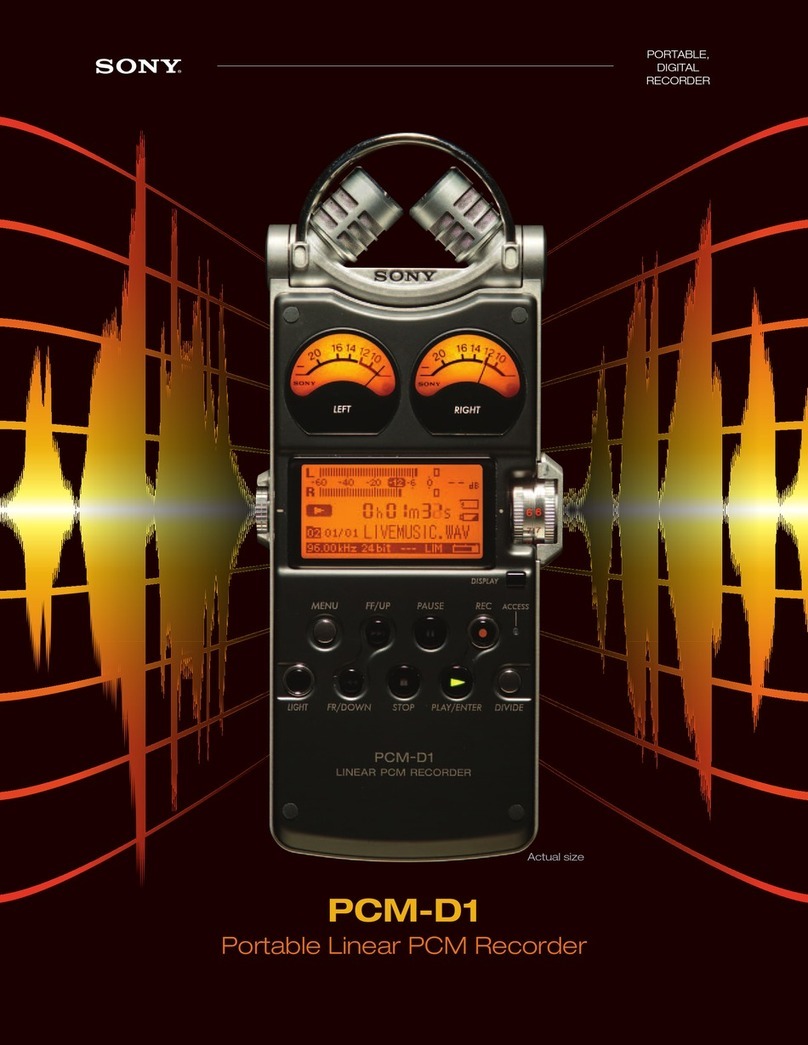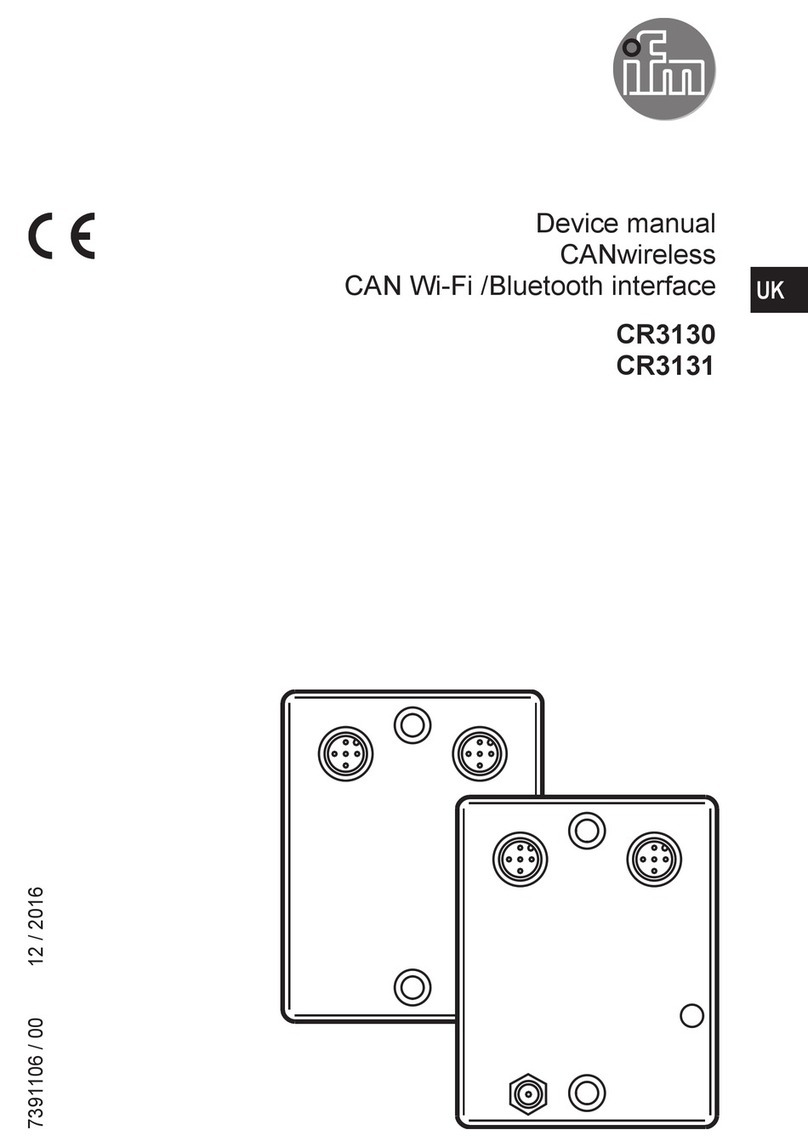
Issue Preliminary 1, January 2023 Model 544D User Guide
Page 12 Studio Technologies, Inc.
Model 544D
AUDIO INTERFACE
Line Inputs
The Model 544D provides two analog line-level
inputs that are intended for connection to balanced
or unbalanced signal sources associated with profes-
sional audio and video equipment. It’s expected that
the nominal level of the analog sources will either be
+4 dBu for SMPTE
®
applications, 0 or –2 dBu for EBU
applications, or –10 dBu for “semi pro” applications.
(Refer to a later section of this guide for analog line
input nominal level conguration.) Commonly used
sources could include analog I/O ports on broadcast
matrix intercom systems, audio consoles, video
storage and playback systems, wireless microphone
receivers, and audio testing equipment. The circuitry
associated with the line inputs is analog, electronically
balanced, capacitor coupled, with a nominal imped-
ance of 20 k ohms.
Two 3-pin female XLR connectors, located on the
Model 544D’s back panel, are used for interfacing
with the source signals. Prepare 3-pin male XLR
mating connectors such that pin 2 is signal high (+),
pin 3 is signal low (–), and pin 1 is common/shield. It’s
also probable that unbalanced sources will interface
correctly. With an unbalanced source begin by con-
necting signal high (+) to pin 2 and signal low/shield
(–) to both pins 1 and 3. If this results in hum or noise,
next try connecting signal high (+) to pin 2 and signal
low/shield (–) only to pin 3; leave pin 1 unconnected
(“oating”).
Line Outputs
The Model 544D provides two analog line-level out-
puts. These analog outputs are designed for general-
purpose use which could include connecting to analog
inputs on devices including matrix intercom systems,
transmitters associated with wireless in-ear monitors,
audio consoles, or amplied speakers. The circuitry
associated with the line outputs is analog, capacitor-
coupled, and has a nominal source impedance of 200
ohms. They will perform optimally when driving loads
of 2 k (2000) ohms or greater. The nominal level of
the line outputs is congurable to be either +4 dBu,
–2 dBu, or –10 dBU, corresponding to the needs of
SMPTE, EBU, or “semi-pro” applications. (Refer to a
later section of this guide for analog line output level
conguration.)
Two 3-pin male XLR connectors, located on the Model
544D’s back panel, are provided for interfacing the
line outputs with associated equipment. Prepare 3-pin
female XLR mating connectors such that pin 3 is
signal high (+), pin 2 is signal low (–), and pin 1 is
common/shield. To connect to an unbalanced load
use pin 2 as signal high (+) and pin 1 as low/shield;
do not connect anything to pin 3. Do not short pin 3
to pin 1 on a line output connector as it will stress the
output circuitry.
General-Purpose Inputs (GPI)
The Model 544D provides two general-purpose
input functions that are referred to as GPI 1 and
GPI 2. These functions allow transport of the status
of relay contacts or open-collector logic signals. The
Model 544D’s GPI inputs use logic circuitry “pulled
up” to 3.3 volts DC by way of resistors, which are
active whenever they are brought to their logic low
state. While the GPI input circuitry is protected from
over-current and static discharge (ESD), care should
be taken to minimize the chance that “nasty” signals
can reach them.
The GPI inputs are active only when held in their low
state; they can’t be congured to change state (“latch”)
in response to a logic pulse or momentary closure.
Pins on a 9-pin female D-subminiature connector
(DE-9F) are used for interfacing with the GPI inputs
and system common connections. This connector is
located on the Model 544D’s back panel. A GPI is
only active when its corresponding pin is connected
to system common. GPI 1 is accessible on pin 3 and
GPI 2 on pin 4. System common is available on pins
8 and 9. Refer to Figure 2 for connection details.
General-Purpose Outputs (GPO)
The Model 544D provides two general-purpose output
functions that are referred to as GPO 1 and GPO 2.
These functions provide contact closures that respond
to trigger signals transported over the Dante input
(receiver) audio paths. The trigger signals are in the
form of high-frequency audio tones (typically 18 or
20 kHz) that travel along with the normal audio sig-
nals (“in band” audio). The GPO functions can also
change state in response to user activation using the
“virtual” on/o buttons accessible via the STcontroller
application. The normally-open (not shorted) contact
closures are isolated from system common. They are
implemented using solid-state relay contacts which
are intended to control low-voltage/low-current DC
functions. The contacts are rated for use at up to




















